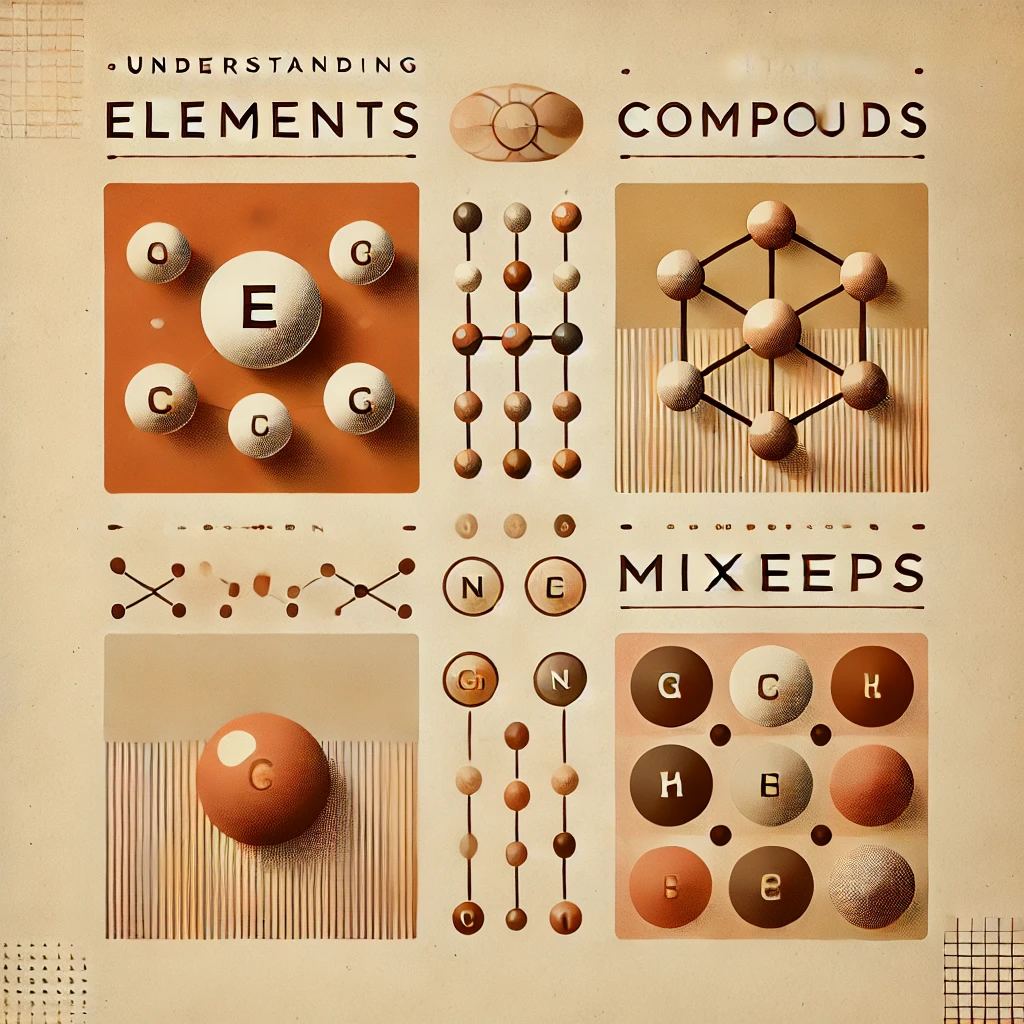Understanding the types of substances is a fundamental part of chemistry and an important topic for the Hazardous Materials Handler Exam. In this article, we will explain in detail the concepts of atoms and molecules, how to calculate molecular weight, the differences between isomers and allotropes, and the classification of substances into elements, compounds, and mixtures.
Classification of Substances
Substances can be broadly classified into three categories based on their composition: elements, compounds, and mixtures.
- Element: A substance composed of only one type of element that cannot be broken down by chemical means. Examples: Nitrogen (N₂), Copper (Cu), Phosphorus (P), Sulfur (S), Sodium (Na), Aluminum (Al)
- Compound: A substance formed by the chemical combination of two or more elements. It can be decomposed by electrolysis or heat. Examples: Carbon dioxide (CO₂), Sodium chloride (NaCl), Ammonia (NH₃), Acetic acid (C₂H₄O₂)
- Mixture: A physical combination of two or more substances. Each component retains its own properties and can be separated by physical methods such as filtration or distillation. Examples: Seawater, sugar water, air, gasoline
What is Percentage Composition?
Percentage composition is a way to express the composition of a substance by showing the volume or mass ratio of each component as a percentage (%).
- Percentage composition of water: H₂O → Hydrogen (H) = 11.11%, Oxygen (O) = 88.89%
- Percentage composition of air: Nitrogen (N₂) = 78%, Oxygen (O₂) = 20.9%, Argon, Carbon dioxide, etc. = remaining portion
Key Points Related to the Exam
- Classification of substances: Understand the differences between elements, compounds, and mixtures
- Compound vs. mixture: Compounds are chemically bonded, mixtures are physically combined
- Percentage composition: Be able to calculate mass ratios of elements in a compound
- Decomposition of compounds: Know the concepts of electrolysis and thermal decomposition
Sample Exam Questions
次のうち、化合物に該当するものはどれか?
Which of the following is classified as a compound?
(1) 窒素(N₂)
(2) 空気
(3) 塩化ナトリウム(NaCl)
(4) 銅(Cu)
(1) Nitrogen (N₂)
(2) Air
(3) Sodium chloride (NaCl)
(4) Copper (Cu)
Answer: (3) Sodium chloride (NaCl) – Because it is composed of two or more elements (Na and Cl) chemically bonded together.
次の記述のうち、正しいものはどれか?
Which of the following statements is correct?
(1) メタノールは、ガソリンと同じようにさまざまな炭化水素の混合物である。
(2) アルゴンは単体であるが、酸素は混合物である。
(3) 水は、水素と酸素が化学的に結合した化合物である。
(4) 空気は、主に酸素と窒素で構成された化合物である。
(5) ガソリンや灯油は2種類以上の元素からできている化合物である。
(1) Methanol, like gasoline, is a mixture of various hydrocarbons.
(2) Argon is an element, but oxygen is a mixture.
(3) Water is a compound formed by the chemical bonding of hydrogen and oxygen.
(4) Air is a compound mainly composed of oxygen and nitrogen.
(5) Gasoline and kerosene are compounds made from two or more elements.
Answer: (3) Water (H₂O) is a compound formed by the chemical bonding of hydrogen and oxygen.
Summary
Substances can be classified into elements, compounds, and mixtures, and understanding the characteristics of each is essential. By learning how to calculate percentage composition and understand decomposition methods, you will be better prepared for the exam. These fundamental concepts frequently appear in the Hazardous Materials Handler Exam, so be sure to study them thoroughly.



コメント